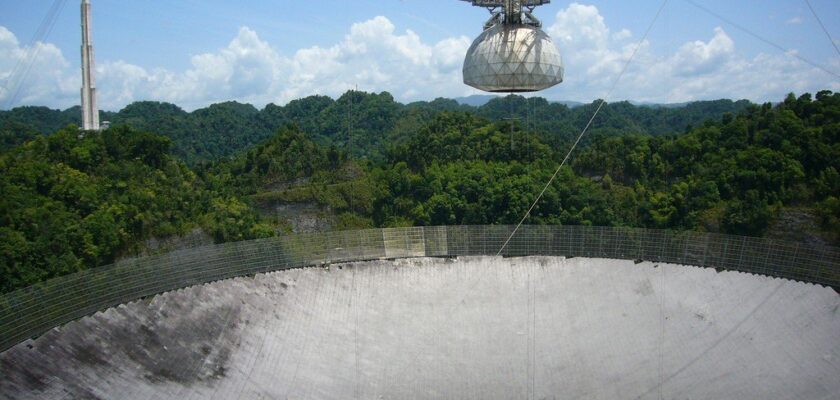Arecibo Observatory
Arecibo is an astronomical observatory located in Puerto Rico, 15 km from the city of Arecibo. It is located 497 meters above sea level. The giant bowl, 304 m in diameter and 50 m deep, is one of the world’s largest radio telescopes built inside a natural sinkhole. Many kilometers of cables are used to suspend the telescope’s antenna array above the reflector. The antenna irradiator is movable, suspended from three towers. Aiming the telescope at a given point of the celestial sphere is carried out by moving the irradiator. The telescope is currently used for research in radio astronomy, atmospheric physics and radar observations of solar system objects. Arecibo Observatory is also known for its participation in the SETI (Search for Extraterrestrial Intelligence) project.
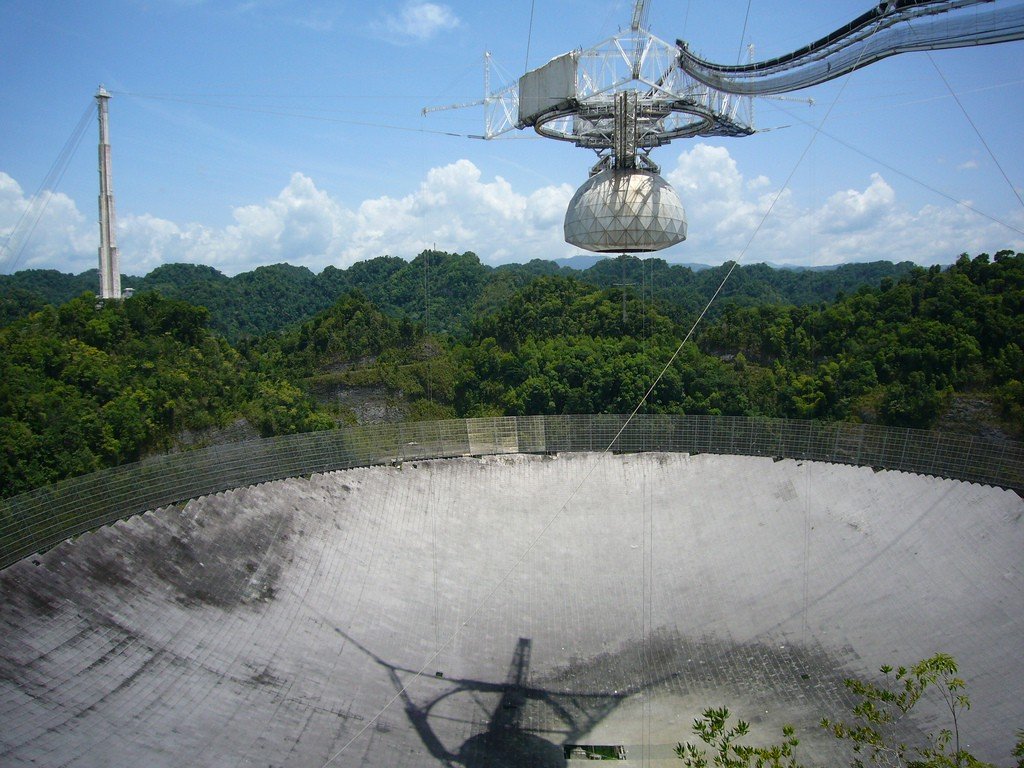
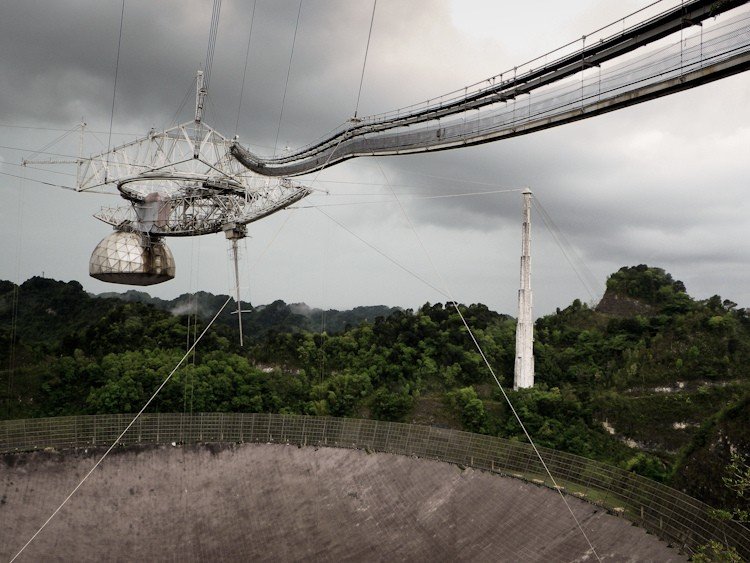
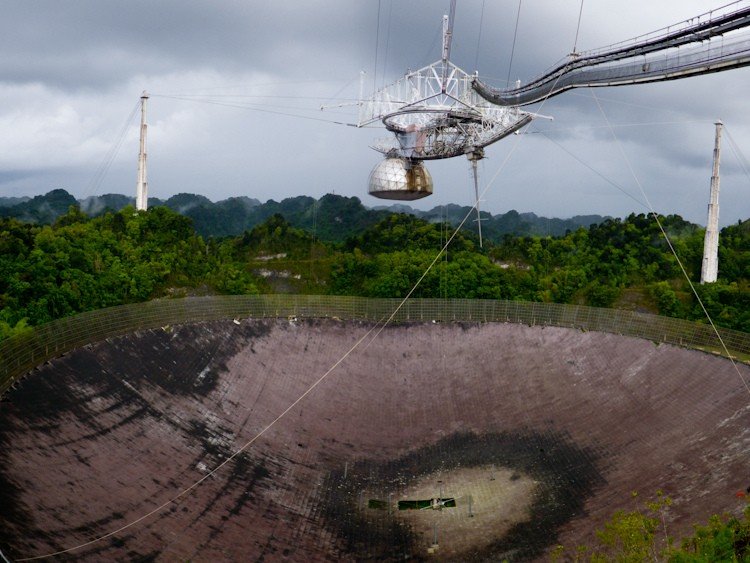
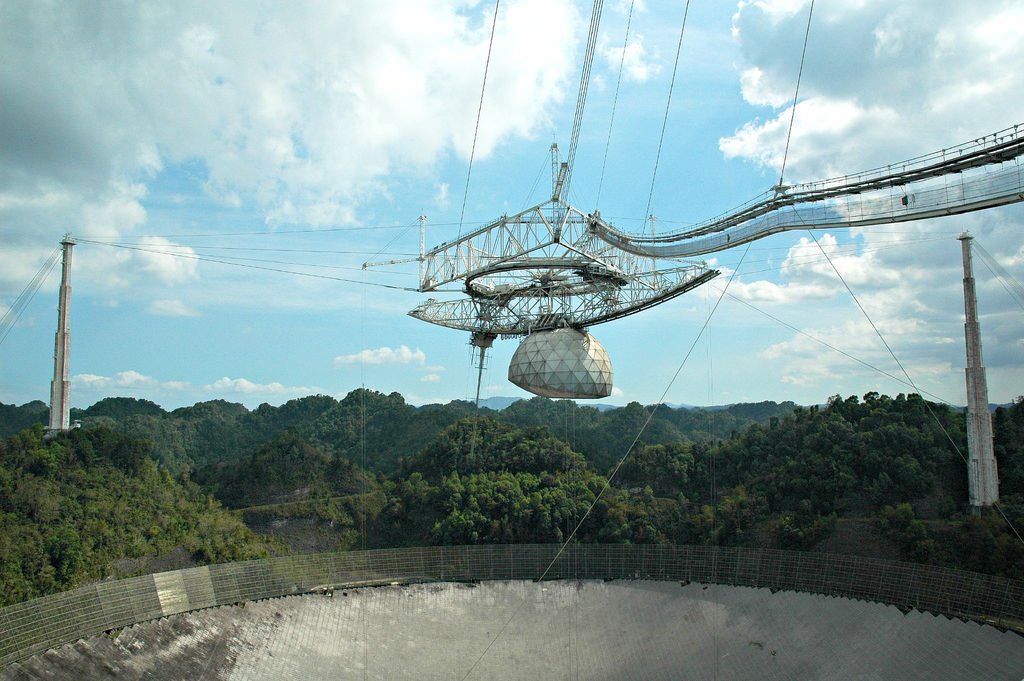
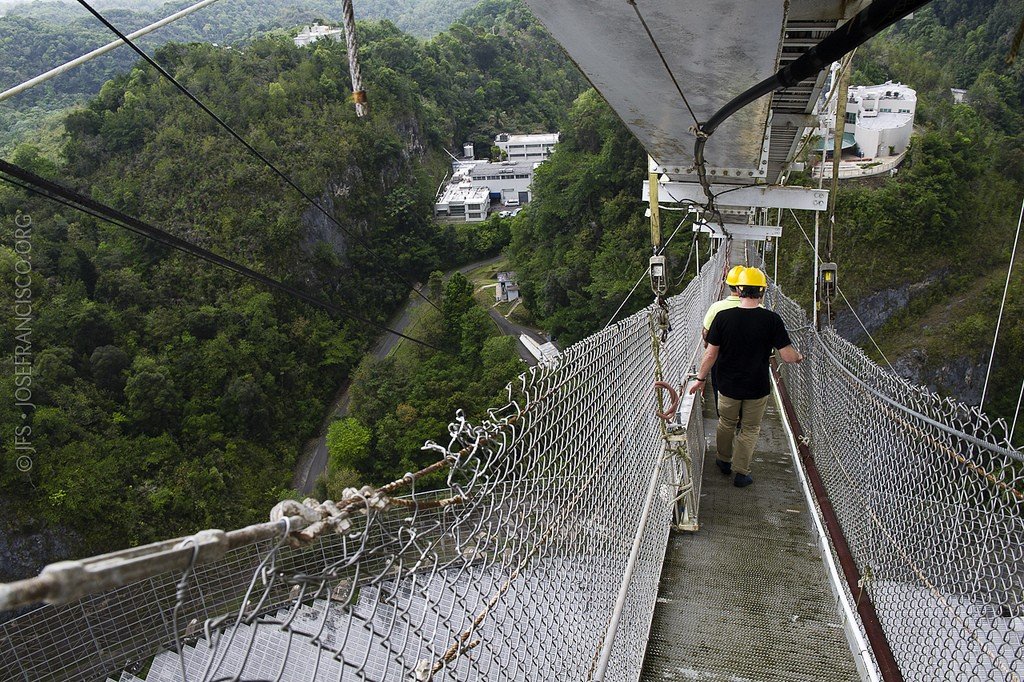
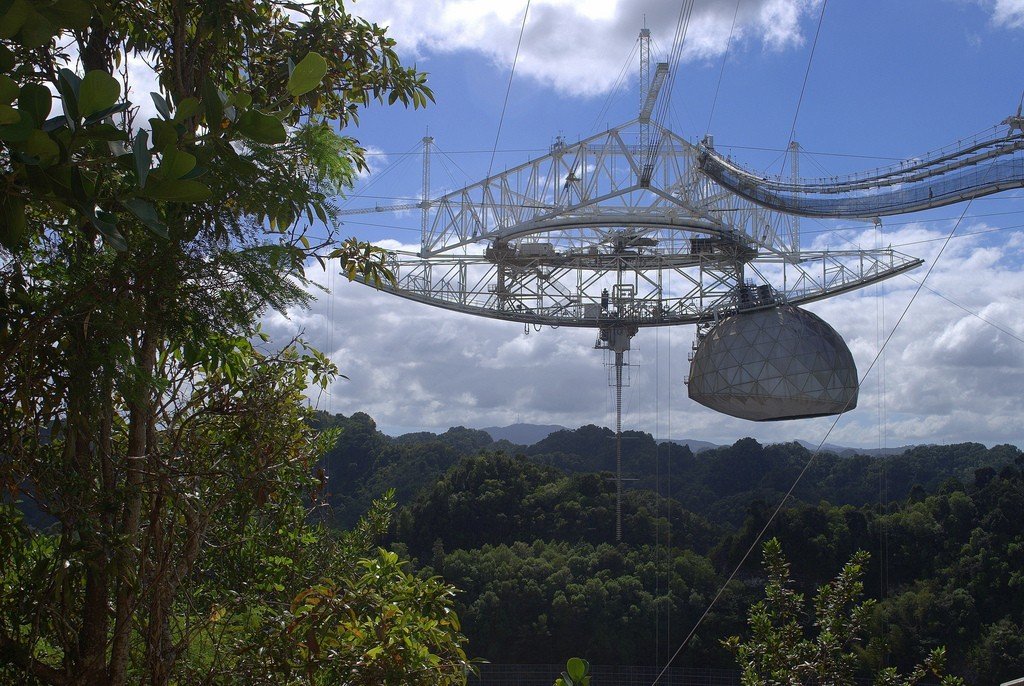
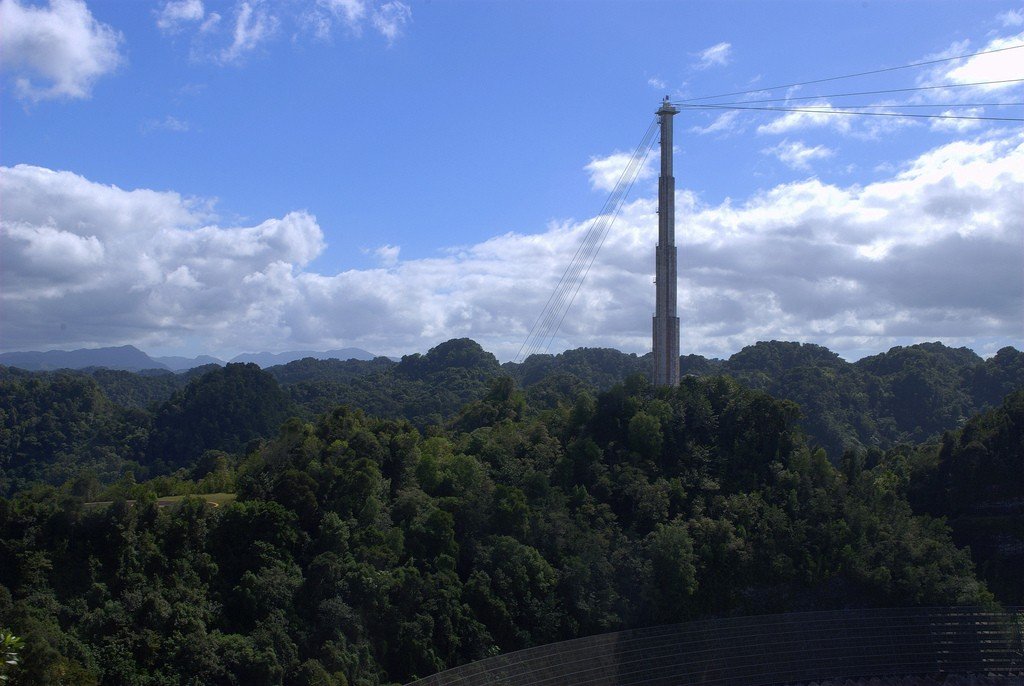
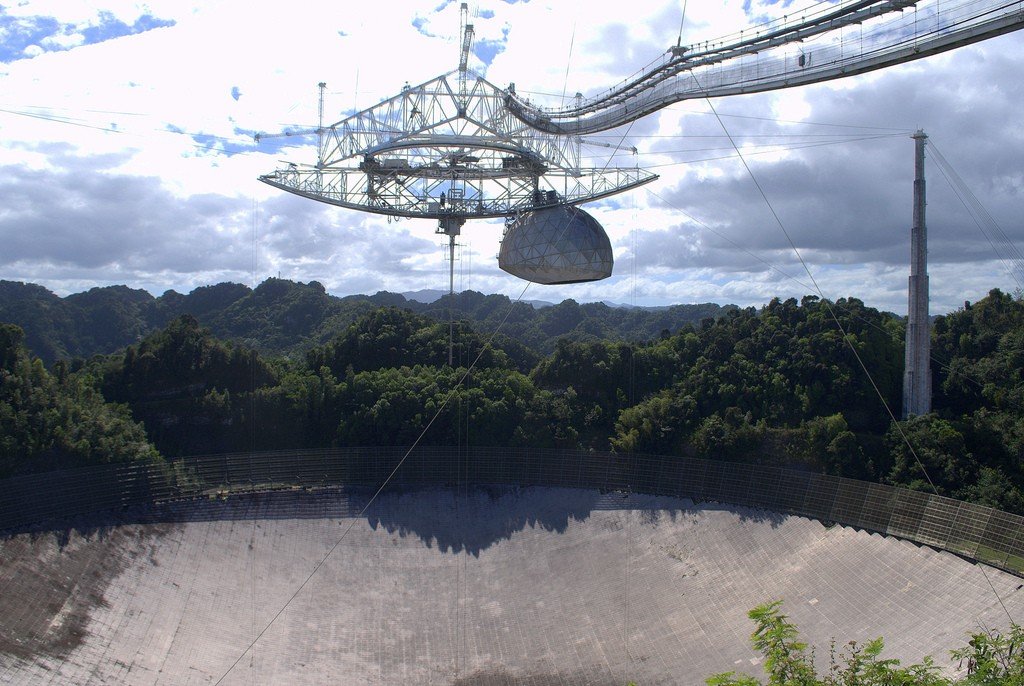
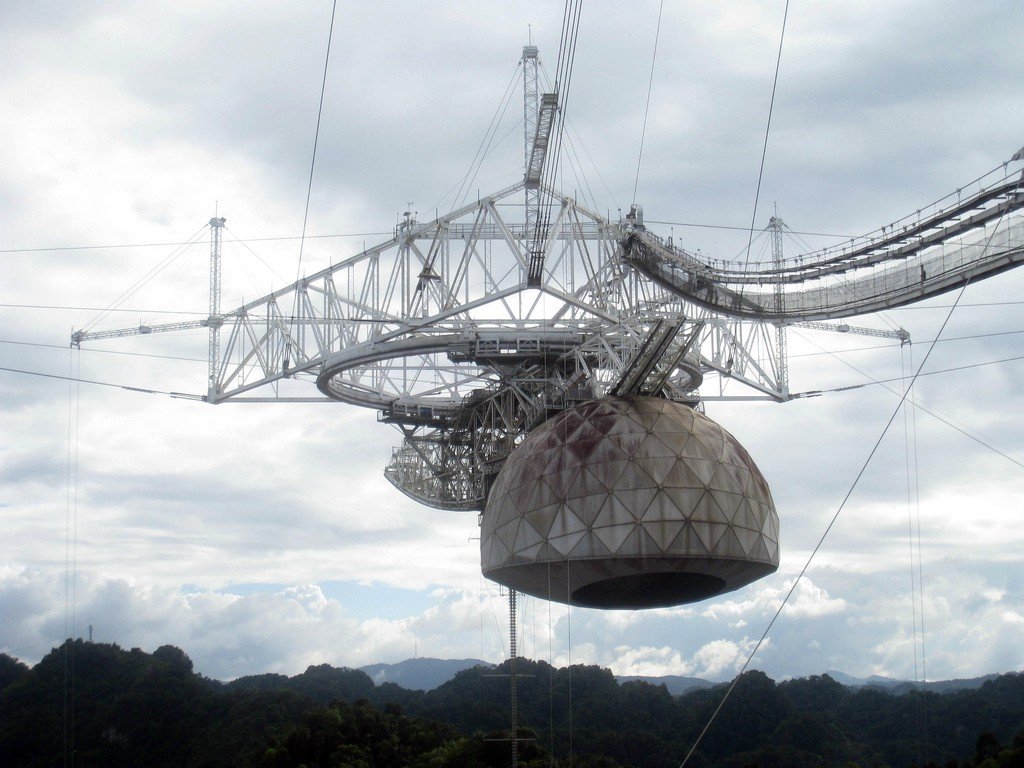
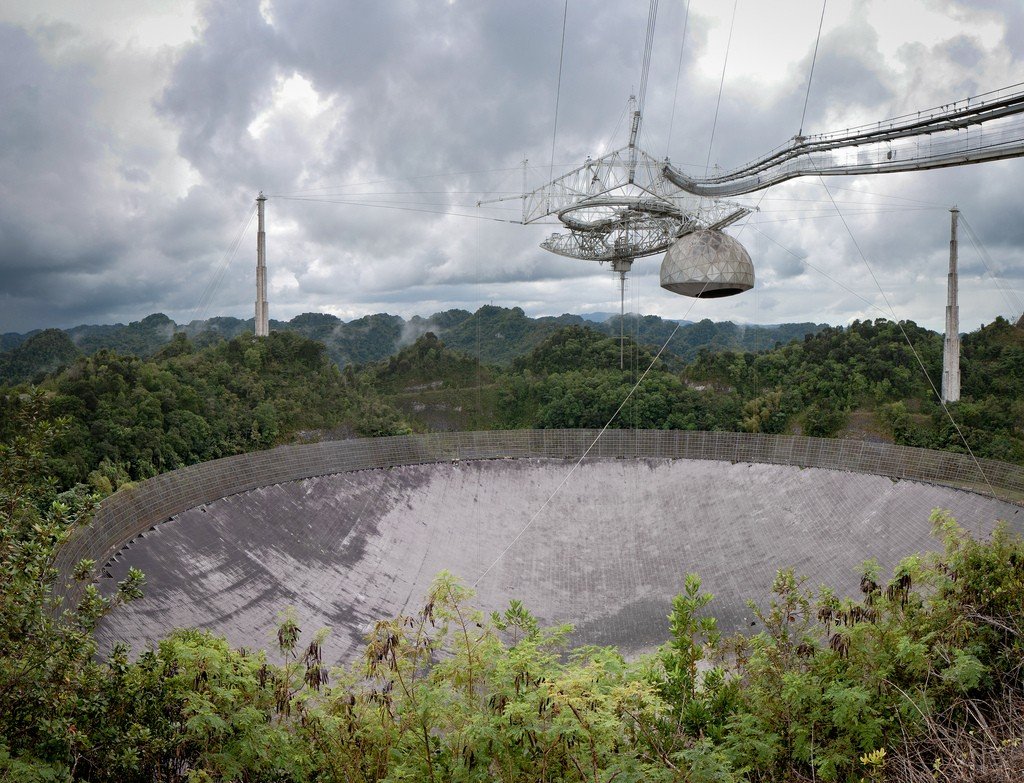
Highlights
Research at Arecibo is conducted by Cornell University in cooperation with the National Science Foundation (USA), observatory code “251”. The observatory is also the U.S. National Astronomy and Ionosphere Center (NAIC).
.Main parameters of the radio telescope
- Operating wavelength range: from 3 cm to 1 m. .
- Operating radio frequency range: 50 MHz to 10 GHz .
- Focal length: 132.5 meters .
- Reflector mirror shape: spherical surface:
Reflector mirror diameter: 304.8 m.Depth of the reflector mirror: 50.9 m.The area of the mirror is ≈ 73,000 m².
.History
Construction of the radio telescope began in 1960. The original purpose of the telescope was to study the Earth’s ionosphere. The author of the construction idea: Cornell University professor William Gordon.
The Arecibo Observatory was officially opened on November 1, 1963.
.Among the discoveries made at the observatory are:
.- On April 7, 1964, Gordon Pettengill and R. Dice refined the sideric rotation period of Mercury from 88 days to 59.
- In 1968, the measurement of the periodicity of a pulsar in the Crab Nebula (33 ms), and similar measurements for similar objects, which helped confirm the existence of neutron stars. In 1974, Russell Hulse and Joseph Taylor discovered the first double pulsar, PSR B1913+16, (for which they were awarded the Nobel Prize in Physics in 1993)..
- In 1982, the first “millisecond” pulsar PSR J1937+21, (Don Backer, Shri Kulkarni and others) was discovered. The rotation rate of this object is 642 times per second (it was, until 2005, the fastest rotating pulsar discovered).
- In 1990, Alexander Volshchan discovered the pulsar PSR 1257+12, which, with further study, discovered the first planets outside the solar system. In 1990, the pulsar PSR 1257+12 was discovered in the pulsar.
- In 1994, surfaces similar in radio-reflective properties to water ice were discovered in the circumpolar regions of Mercury. In 1994, the pulsar was discovered in the subpolar regions of Mercury.
- Since 1999, the information from this radio telescope has been processed by the SETI@home project, via Internet-connected volunteer computers.
- Since September 23, 2008, the Arecibo Observatory has been listed on the U.S. National Register of Historic Places (NRHP) under the number 07000525.
- In 2004, this telescope discovered the “pulsar” PSR J1906+0746, whose radio beam disappeared in 2010 from the field of view of Earth-based telescopes due to geodetic precession.
In popular culture
.- The observatory was filmed as a CEU in the 1995 movie GoldenEye from the James Bond epic
- Present in the game Battlefield 4 on the map “Alien Signal.”
- Appears in the movie Contact (1997), based on Carl Sagan’s novel of the same name
